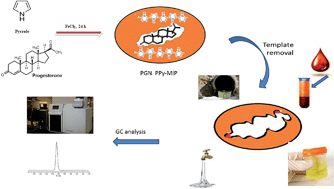Selective extraction of progesterone hormones from environmental and biological samples using a polypyrrole molecularly imprinted polymer and determination by gas chromatography
Abstract
A Molecularly Imprinted Polymer (MIP) was chemically prepared for the selective batch extraction of progesterone (PGN) hormones by chemical oxidation of pyrrole using FeCl3. A non-imprinted polymer (NIP) was also synthesized in the absence of PGN. The developed sorbents were characterized by using FT-IR and SEM techniques. Gas chromatography coupled with Flame Ionization Detector (GC-FID) analysis was applied for quantitative determination. The parameters affecting the efficiency of this method were thoroughly investigated. The imprinted polymer showed specificity towards template PGN. Investigation of the selectivity characteristics revealed that, compared to similar compounds, the developed polymer showed selectivity towards PGN. Some parameters like desorption solvent, amount of sorbent, pH, and ionic strength were optimized and the measurements were all conducted under optimal conditions. The limit of detection (LOD) and limit of quantification (LOQ) of the method were obtained to be 0.625 and 1.875 ng mL−1, respectively. The application of the MIP for separation and pre-concentration of PGN in environmental and biological samples (urine, blood, hospital waste water and tap water) was examined.


 Please wait while we load your content...
Please wait while we load your content...